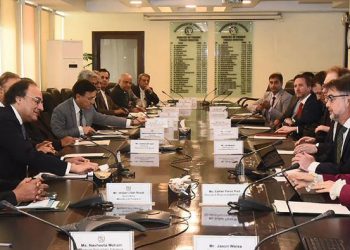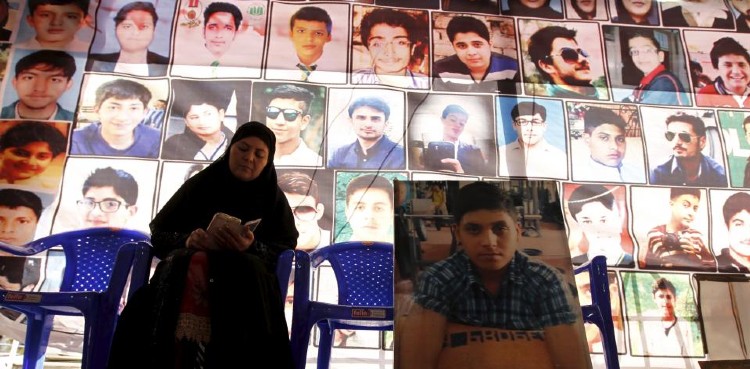Pakistan is facing a water crisis for decades and has been classified as water “stressed” to water “scarce” occasionally.
Currently, the country has the annual water availability falling below 1,000 cubic meters per person, which is as low as water available per person for the entire year would not even fill half of an Olympic swimming pool.
Sensing the water shortage, the country is trying to increase its water storage capacity for the last two decades, but, unfortunately, the matter has assumed a rather political than administrative status.
Pakistan had started working on Kalabagh Dam after the construction of Tarbela Dam. In 1979, the government obtained a grant of $25 million from the United Nations Development Program for Kalabagh Dam’s preparation, detailed design and feasibility.
The World Bank was also approached which agreed to finance the project. Until this point, previous dam projects such as Mangla (under Ayub Khan) and Tarbela (under Zulfikar Ali Bhutto) never faced any opposition. Even Kalabagh was approved by the Central Development Working Party without dissent.
But soon, the Kalabagh Dam became the most controversial political issue of the country and todate the nation could not create consensus on it.
In 2006, President Pervez Musharraf announced the decision to construct five multi-purpose storage dams in the country during the coming 10–12 years.
According to the plan, the Diamer-Bhasha Dam project was proposed to be built in the first phase.
After two years, the Executive Committee of National Economic Council formally approved the project. The Council of Common Interests Pakistan, a constitutional body representing the provinces, also approved the construction of the dam.
The foundation stone of the project was laid on October 18, 2011.
Pakistan Engineering Council (PEC) gave clearance of seismic study to Diamer-Bhasha Dam in 2018 and advised the government to establish a public limited company for early completion of the dam.
On May 11 (yesterday), Prime minister Imran Khan was briefed in detail about the progress of the resolution of all pending issues related to the construction of Diamer-Bhasha Dam.
The meeting headed by the premier was informed that Diamer Bhasha project had remained stuck for decades due to various reasons.
He was told that the dam’s construction would create 16,500 jobs and utilize the huge quantity of cement and steel, which would give a boost to the industry, besides its main purposes of water storage and producing 4500MW of cheap and affordable electricity for meeting energy requirements of the country.
According to the story published in the express tribune, the 6.4MAF (Million Acre Feet) water storage capacity of
the dam would reduce the current water shortage in the country of 12 MAF to 6.1 MAF. It would add 35 years to the life of Tarbela Dam by reducing sedimentation. An area of 1.23 million acres of land would be brought under agriculture due to the dam.
PM was told that an amount of Rs78.5 billion would be spent on social development of the area around Diamer Bhasha Dam as part of the project.
It would also be a major source of flood mitigation and save billions worth of damages caused by floods each year.
While addressing the meeting, the PM said ensuring water security was the foremost priority of the present government.
Besides optimum utilisation of available water resources for agricultural needs, construction of the dams in the country would help meet energy requirements at an affordable rate, he added.
The federal government is taking all possible steps to start construction of the Diamer-Bhasha Dam and the Prime Minister has assured yesterday that the government is ready to start constructing the dam.
Unfortunately, anti-state elements have always been busy to sabotage the construction of dams in Pakistan, which has kept derailing Pakistan from the track of development.
Sources said that India invests billions of rupees annually in those anti-Pakistan elements so the construction of Kalabagh Dam could remain controversial, but these elements are facing defeat at every front.
Today, a fake complaint against Water and Power Development Authority (WAPDA) over the construction of 800MW-Mohmand Dam was finally quashed as the complainant, who turned out to be a cook, living in a far-flung area, denied filing a case before Lahore High Court and National Accountability Bureau (NAB).
Surprisingly, the name and identity, used for lodging a fake complaint with the chairman NAB and a frivolous writ petition before the Lahore High Court against the award of Consultancy Contract for Mohmand Dam Project, turned out to be that of a cook, Mehboob Elahi, residing in the remote area of Choti Zerein of Dera Ghazi Khan District.
The NAB dismissed the complaint after finding it fake and communicated it to Wapda in writing earlier last week.
This act clearly appears to be an attempt by the anti-dam lobby to jeopardise Mohmand Dam construction, according to an official.
WAPDA has reportedly decided to initiate legal proceedings in the matter at the appropriate forum.
It is the responsibility of every Pakistani to strengthen the Government of Pakistan in its aim of constructing new dams and resolving water scarcity in the long run for the country. It is not a matter of politics, but the right of our future generations.















































